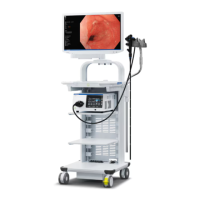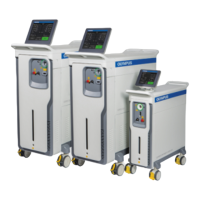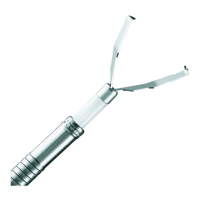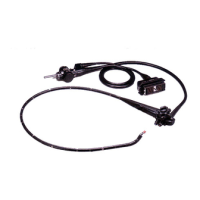Chapter 3 Preparation and Inspection
31
ULTRASOUND GASTROVIDEOSCOPE GF-UCT180
5. Using both hands, bend the insertion tube of the endoscope into a
semicircle. Then, moving your hands as shown by the arrows in Figure 3.3,
confirm that the entire insertion tube can be smoothly bent to form a
semicircle and that the insertion tube is pliable.
Figure 3.3
6. Gently hold the midpoint of the bending section and a point 20 cm from the
distal end. Push and pull gently to confirm that the junction between the
bending section and the insertion tube is not loose.
7. Inspect the objective lens and light guide lens at the distal end of the
endoscope’s insertion section for scratches, cracks, stains, or other
irregularities.
8. Inspect the air/water nozzle at the distal end of the endoscope’s insertion
section for abnormal swelling, bulges, dents, or other irregularities.
9. Inspect the ultrasound transducer surface at the distal end of the
endoscope’s insertion tube for scratching, cracks, bulges, dents or other
irregularities.
Inspection of the bending mechanisms
Perform the following inspections while the bending section is straight.
If the movement of the UP/DOWN angulation lock,
RIGHT/LEFT angulation lock, and the angulation control
knobs are loose and/or not smooth, or the bending section
does not angulate smoothly, the bending mechanism may be
abnormal. In this case, do not use the endoscope because it
may be impossible to straighten the bending section during
an examination.

